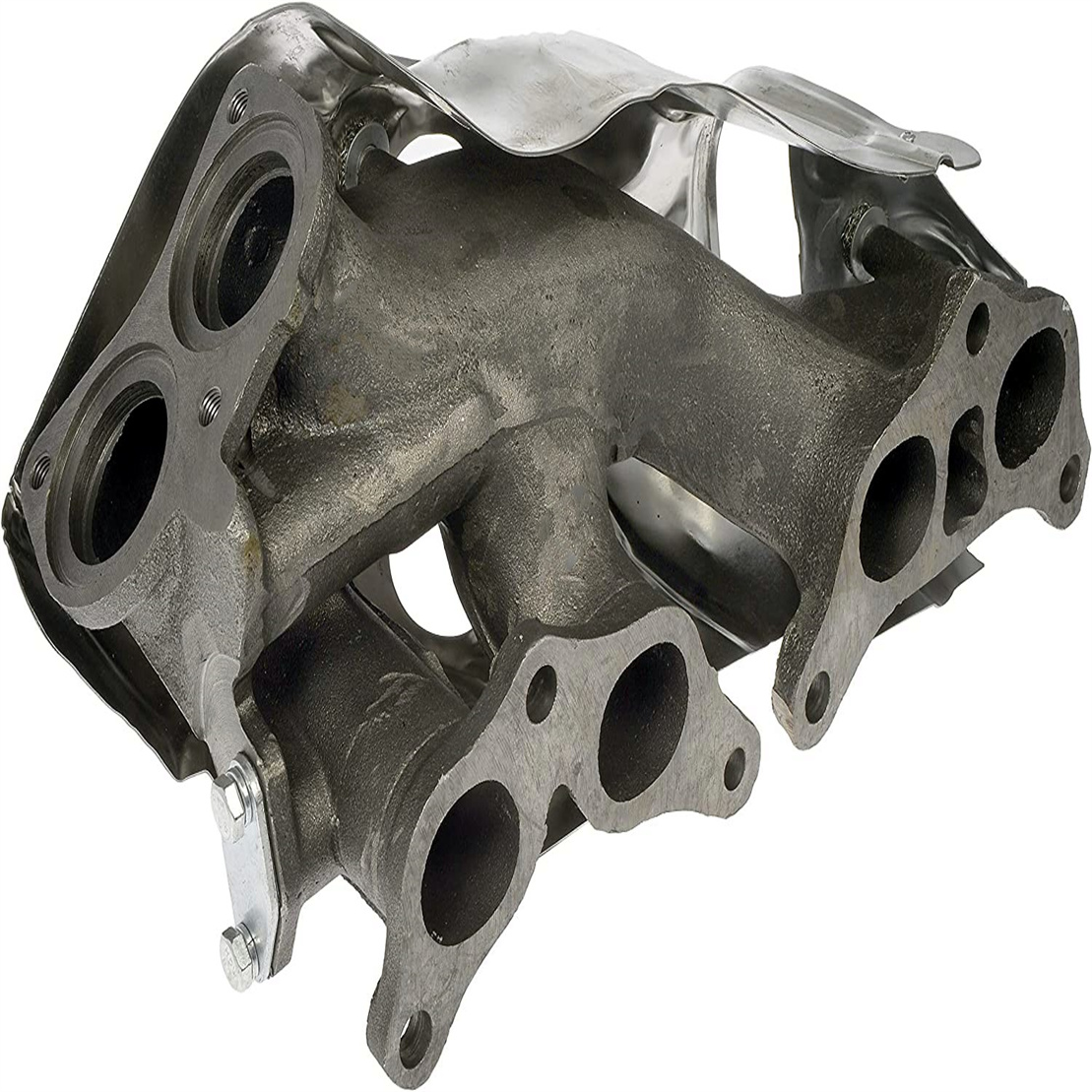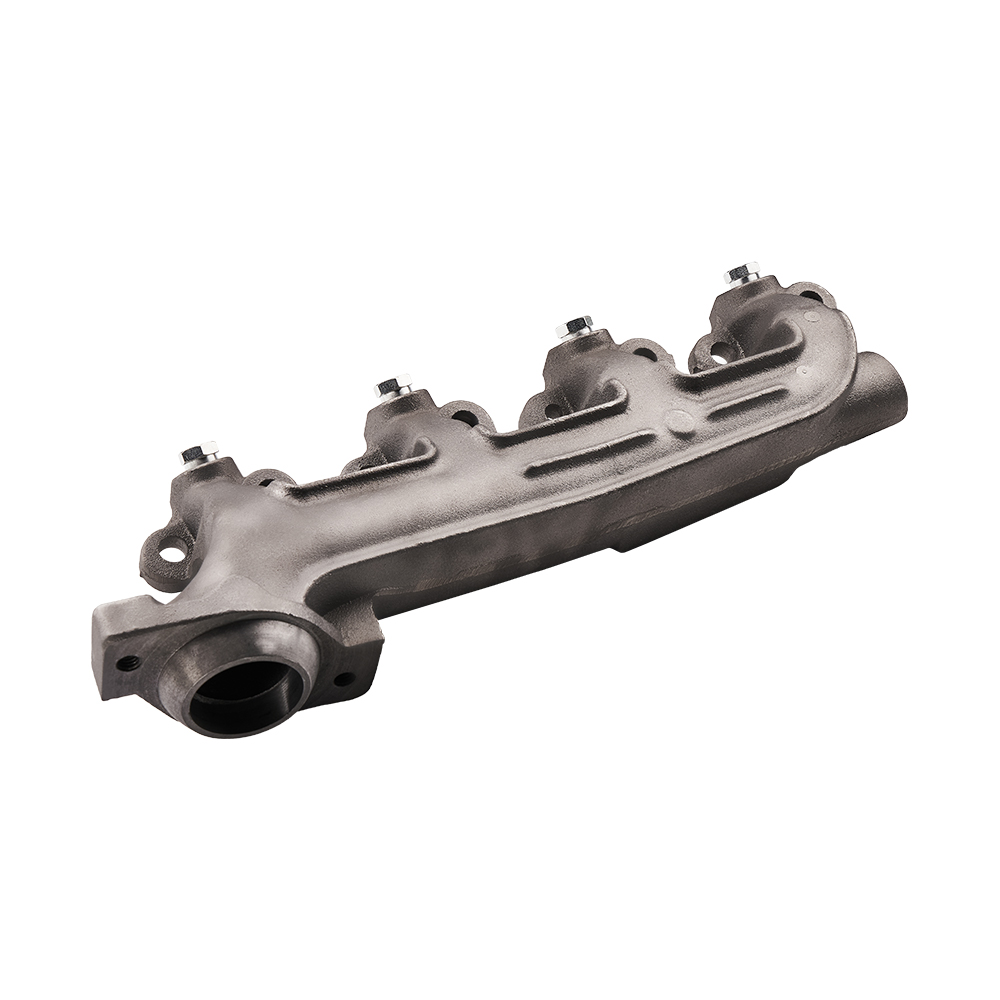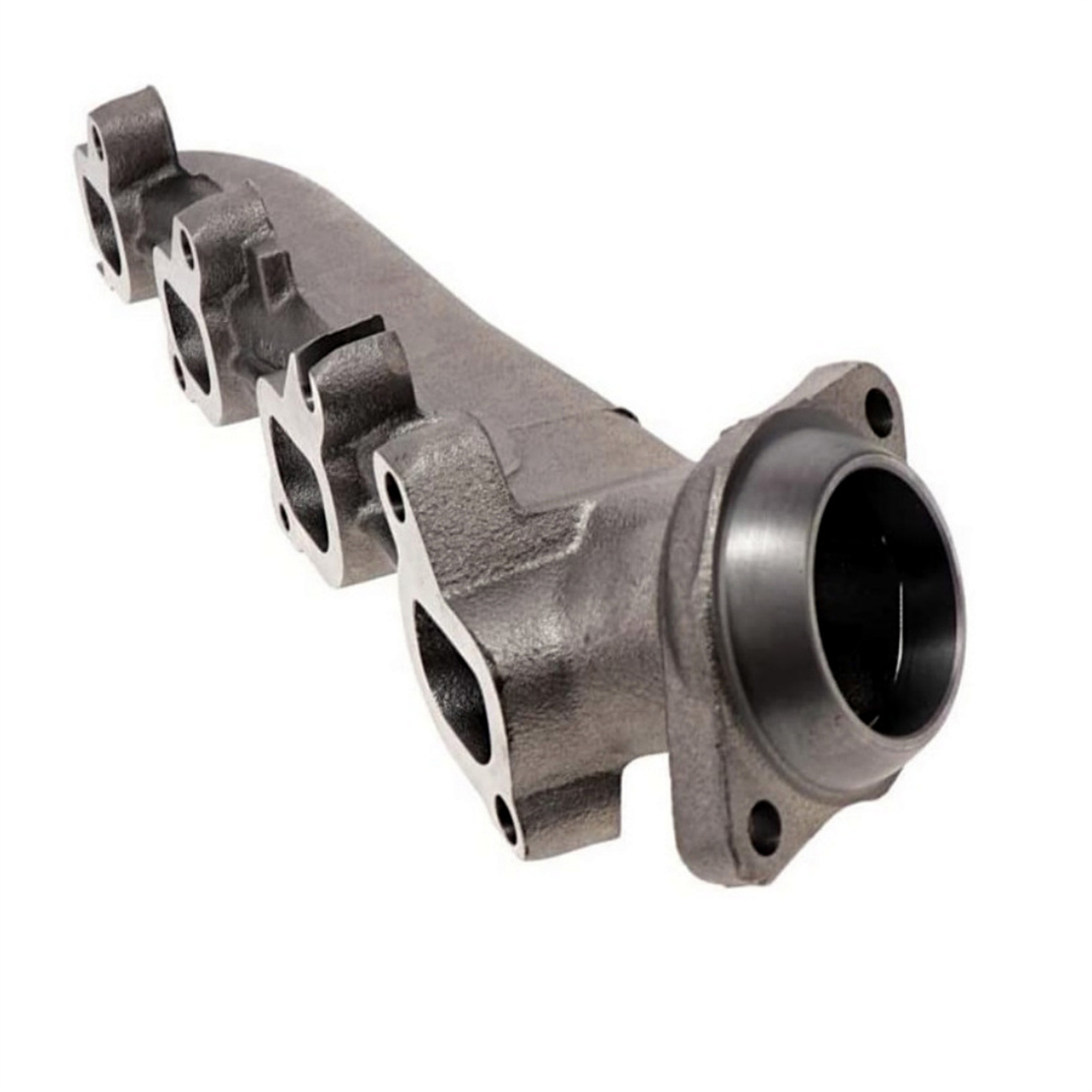
A leaking exhaust manifold gasket can cause serious trouble for your Ford. You might hear strange noises, notice reduced engine power, or even smell burning. Ignoring it could lead to costly repairs. Whether it’s a Ford Exhaust Manifold or a Nissan Exhaust Manifold NISSAN 2.4L, fixing it promptly keeps your car running smoothly.
Key Takeaways
- Recognize the symptoms of a leaking exhaust manifold gasket, such as unusual engine noises, reduced power, and burning smells, to address issues early and avoid costly repairs.
- Gather essential tools like a wrench set, replacement gasket, and safety gear before starting the repair to streamline the process and ensure safety.
- Follow a step-by-step guide for removing the old gasket, cleaning surfaces, and installing the new gasket, while using a torque wrench to avoid over-tightening or under-tightening bolts.
Symptoms of a Leaking Ford Exhaust Manifold

A leaking exhaust manifold gasket can cause several noticeable problems. Recognizing these symptoms early can save you from bigger headaches down the road. Let’s dive into the most common signs.
Unusual Engine Noises
Have you noticed a loud ticking or tapping sound when you start your engine? That’s often one of the first signs of a leaking exhaust manifold gasket. The noise happens because exhaust gases escape through the damaged gasket instead of flowing smoothly into the exhaust system. The sound might get louder as you accelerate. If you hear this, don’t ignore it. It’s your car’s way of telling you something’s wrong.
Reduced Engine Efficiency
A leaking gasket can mess with your engine’s performance. You might feel like your car isn’t as powerful as it used to be. This happens because the leak disrupts the flow of exhaust gases, which can throw off the engine’s balance. You may also notice a drop in fuel efficiency. If your Ford feels sluggish or you’re filling up the tank more often, it’s time to check the exhaust manifold.
Burning Smell or Visible Exhaust Leaks
A burning smell inside or around your car is another red flag. Exhaust gases escaping from the leak can heat nearby components, causing that unpleasant odor. In some cases, you might even see smoke or visible exhaust leaks under the hood. If you spot this, stop driving and address the issue immediately. Ignoring it could lead to more serious damage.
Tip: If you suspect a problem, inspect your Ford Exhaust Manifold for any visible cracks or damage. Catching the issue early can save you time and money.
Tools and Materials for Fixing a Ford Exhaust Manifold Gasket

Before you dive into fixing your Ford Exhaust Manifold gasket, gather the right tools and materials. Having everything ready will save you time and frustration. Here’s what you’ll need:
Wrench and Socket Set
A wrench and socket set is essential for this job. You’ll use it to loosen and remove the bolts securing the manifold. Make sure the set includes the right sizes for your Ford model. A ratchet wrench can make the process quicker and easier, especially in tight spaces.
Replacement Gasket
You can’t fix a leaking gasket without a new one! Choose a high-quality replacement gasket that matches your Ford’s specifications. For example, if you’re working on a Ford Exhaust Manifold for a 4.6L 281 engine, ensure the gasket is compatible with that model. Using the correct gasket ensures a proper seal and prevents future leaks.
Safety Gear (Gloves, Goggles)
Safety first! Always wear gloves to protect your hands from sharp edges and hot surfaces. Goggles are a must to shield your eyes from debris or rust that might fall while you’re working under the hood. Don’t skip this step—it’s better to be safe than sorry.
Penetrating Oil and Torque Wrench
Penetrating oil helps loosen stubborn bolts that may have rusted over time. Spray it on the bolts and let it sit for a few minutes before attempting to remove them. Once you’re ready to reassemble, a torque wrench ensures you tighten the bolts to the correct specifications. This tool is crucial for avoiding over-tightening or under-tightening, which can cause problems later.
Pro Tip: Keep a clean workspace and organize your tools. It’ll make the repair process smoother and less stressful.
Step-by-Step Guide to Fixing a Ford Exhaust Manifold Gasket
Preparing the Vehicle
Start by parking your car on a flat surface. Engage the parking brake and let the engine cool completely. Working on a hot engine can be dangerous, so don’t rush this step. Once the engine is cool, disconnect the negative battery cable to avoid any electrical mishaps. You’ll also want to raise the front of your vehicle using a jack and secure it with jack stands. This gives you enough room to access the Ford Exhaust Manifold.
Tip: Keep a flashlight handy. It’ll help you see the manifold and bolts clearly, especially in tight spaces.
Removing the Old Gasket
Locate the exhaust manifold. Use your wrench and socket set to remove the bolts securing it to the engine. If the bolts are stuck, apply penetrating oil and wait a few minutes before trying again. Once the bolts are out, carefully detach the manifold. You’ll find the old gasket sandwiched between the manifold and the engine block. Remove it gently to avoid damaging the surrounding surfaces.
Cleaning the Manifold Surface
Before installing the new gasket, clean the mating surfaces of the manifold and engine block. Use a scraper or wire brush to remove any residue or rust. A clean surface ensures a proper seal and prevents future leaks. Wipe everything down with a clean cloth to remove debris.
Note: Be thorough during this step. Even a small amount of residue can cause sealing issues.
Installing the New Gasket
Position the new gasket on the engine block, aligning it with the bolt holes. Make sure it sits flat and doesn’t shift. Reattach the Ford Exhaust Manifold over the gasket and hand-tighten the bolts to hold everything in place. Then, use a torque wrench to tighten the bolts to the manufacturer’s specifications. This step is crucial for a secure fit.
Reassembling and Testing
Reconnect the negative battery cable and lower your vehicle from the jack stands. Start the engine and listen for any unusual noises. Check for leaks around the manifold. If everything sounds and looks good, you’ve successfully fixed the issue. Take your car for a short drive to ensure the repair holds up under normal conditions.
Pro Tip: Keep an eye on the manifold over the next few weeks. Catching any issues early can save you from repeating the process.
Common Mistakes When Fixing a Ford Exhaust Manifold
Over-Tightening or Under-Tightening Bolts
Getting the bolt tension just right is critical. Over-tightening can strip the threads or even crack the manifold. On the other hand, under-tightening leaves gaps, allowing exhaust gases to escape. Both mistakes can lead to leaks and more repairs. Always use a torque wrench to tighten the bolts to the manufacturer’s specifications. Don’t guess or rely on feel. If you’re unsure, check your Ford’s manual for the correct torque values.
Tip: Double-check each bolt after tightening. A quick review ensures you didn’t miss any.
Using Incorrect Gasket Material
Not all gaskets are created equal. Using the wrong material can cause sealing issues or premature failure. For example, some gaskets may not handle the high temperatures of the exhaust system. Always choose a gasket designed for your specific vehicle. If you’re working on a Ford Exhaust Manifold, make sure the replacement gasket matches the engine’s specifications. This ensures a proper fit and long-lasting performance.
Pro Tip: Stick to OEM or high-quality aftermarket gaskets. They’re worth the investment.
Skipping the Cleaning Process
Skipping the cleaning step is a common mistake. Residue or rust on the manifold or engine block can prevent the gasket from sealing properly. This leads to leaks, even if you’ve installed everything else correctly. Take the time to clean the surfaces thoroughly. Use a scraper or wire brush to remove old gasket material and debris. A clean surface ensures a tight seal and prevents future problems.
Note: Don’t rush this step. A few extra minutes of cleaning can save you hours of frustration later.
Fixing a leaking gasket starts with spotting the symptoms early. You’ve learned how unusual noises, reduced efficiency, or burning smells can signal trouble. Using the right tools and following the step-by-step guide ensures a smooth repair process. Regular maintenance keeps your Ford Exhaust Manifold in top shape, preventing future leaks and costly repairs.
FAQ
What causes a Ford exhaust manifold gasket to leak?
Heat and pressure from exhaust gases can wear out the gasket over time. Rust, improper installation, or loose bolts can also lead to leaks.
How long does it take to replace an exhaust manifold gasket?
It usually takes 2-4 hours. The time depends on your experience and whether the bolts are easy to remove.
Can I drive with a leaking exhaust manifold gasket?
It’s not safe. A leak can damage your engine and expose you to harmful exhaust gases. Fix it as soon as possible.
Tip: If you’re unsure about the repair, consult a professional mechanic for help.
Post time: Jan-06-2025



